
With a naval officer in command of the International Space Station (ISS), it might have seemed obvious that New Year’s Day in 2001 would carry a corresponding naval tradition. Expedition 1 Commander Bill Shepherd of NASA and his Russian crewmates Sergei Krikalev and Yuri Gidzenko rang in the start of what became the United States’ darkest year—the year of 9/11—with private family conferences and an awareness that a busy few weeks lay ahead.
The infant station had just received its first set of massive power-generating solar arrays and early in 2001 another Space Shuttle crew was set to deliver its Destiny lab for expanded command, control and scientific capability. Spending New Year in orbit was nothing new; since Skylab 4 in 1973-1974, the transition has been celebrated both by Americans and Russians, Japanese and Italians, Dutchmen and Canadians, Frenchmen and Britons, Germans and for the first time in 2023 a citizen of Denmark.
All passed from one year into the next quietly, watching the Home Planet for the merest glimpse of Earthly fireworks and marveling at the achievements of the old year and sharing hopefulness for the promise of the next. Aboard the ISS tonight are seven souls—Expedition 70 Commander Andreas Mogensen, a European Space Agency (ESA) astronaut from Denmark, together with Russian cosmonauts Oleg Kononenko, Konstantin Borisov and Nikolai Chub, NASA’s Jasmin Moghbeli and Loral O’Hara and Japan Aerospace Exploration Agency (JAXA) flyer Satoshi Furukawa—and the 2023/2024 turnover marks the first time that as many as four sovereign nations will have spent a New Year together in orbit.
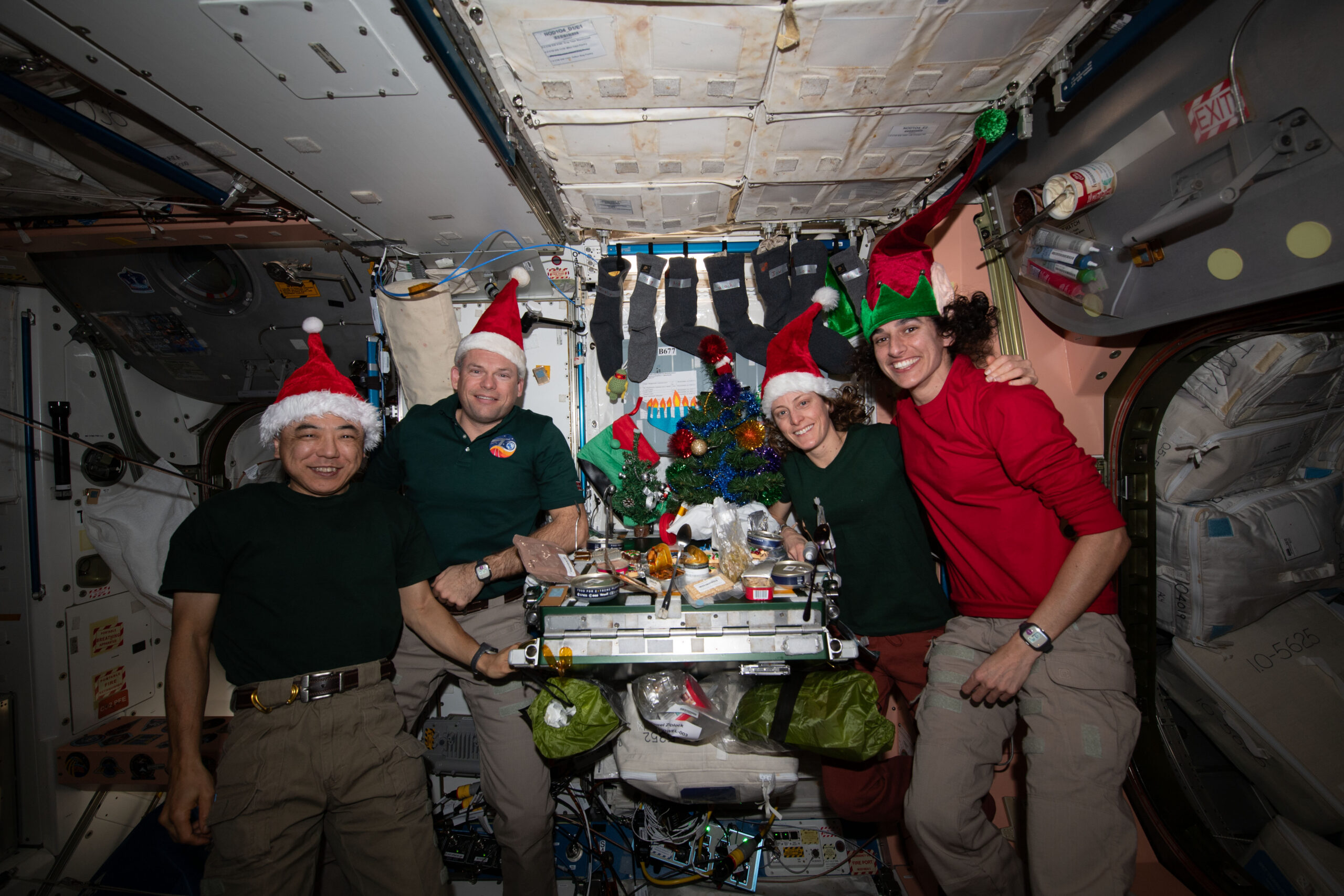
In a recent space-to-ground message, the Expedition 70 crew shared their thoughts about the holiday season and their hopes for the new year to come. “During New Year holiday in Japan,” said Furukawa, “it is common that the whole family gets together.
“People visit the shrine and pray for New Year’s happiness,” he continued. “From the International Space Station, I wish all of you endless happiness and smiles.”
As the New Year began more than two decades ago, in 2001 Shepherd honored his military background by sharing a poem about his experience aboard the ISS. “In long-standing naval tradition,” he explained, “the first entry in a ship’s log for the New Year is always recorded in prose.”
And without further ado, he waxed lyrical about his crew’s journey, “orbiting high above Earth…traveling our destined journey beyond realm of sea voyage or flight.” Shepherd wrote about ringing in a new era as Earth itself revolved, “counting the last thousand years done”, for 1 January 2001—although the second year of a new decade—actually marked the official start of the 21st century.
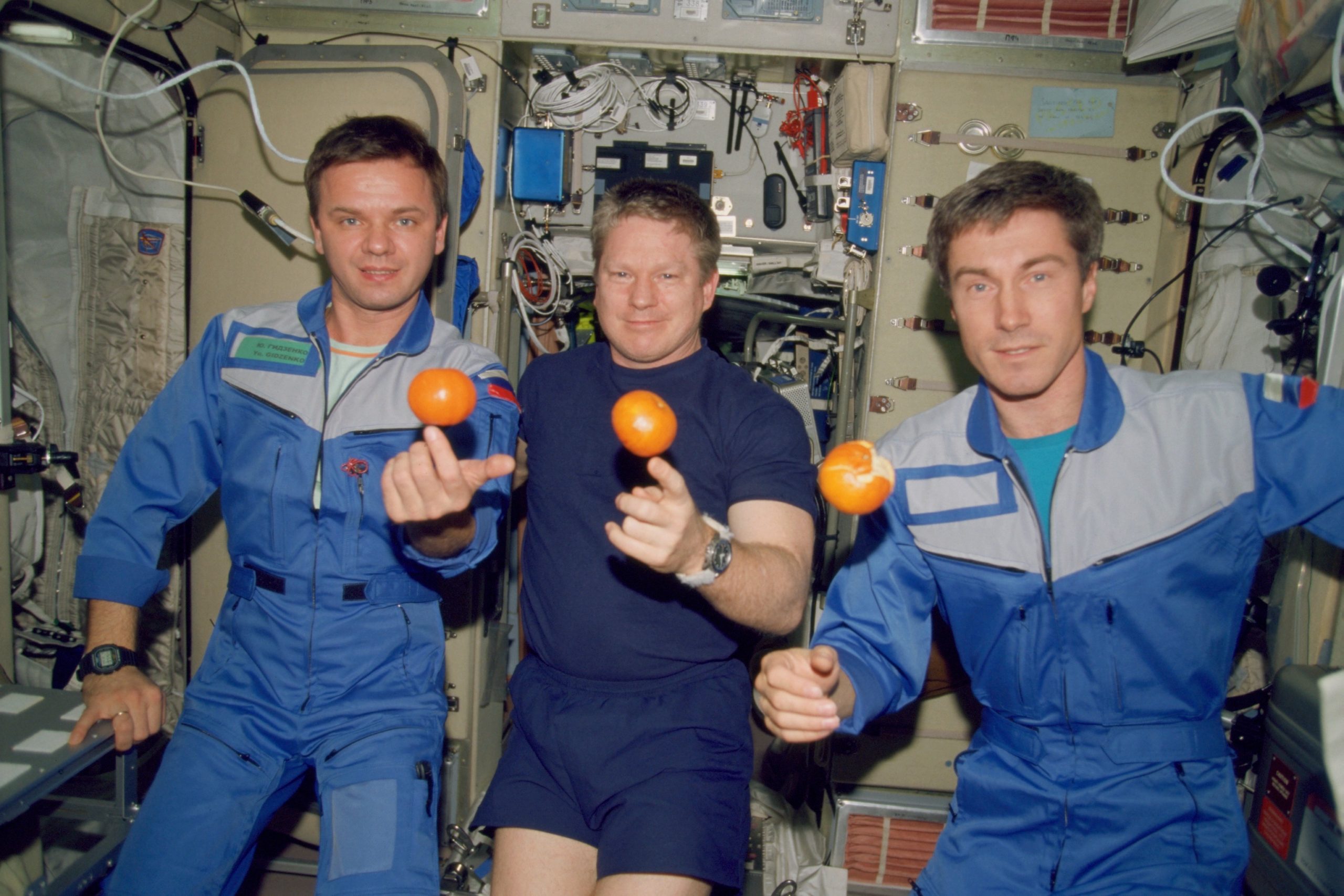
Then Shepherd added an interesting observation to his piece: “Fifteen midnights to this night in orbit; a clockwork not of earthly pace.” For as he, Krikalev and Gidzenko circled the globe at 17,500 mph (28,100 km/h), they passed through numerous terrestrial time zones and “saw” numerous New Years.
For Shepherd, being in this “new age and place” on such a significant date carried a juxtaposition of the romance and adventure of the past and the scientific and technological possibilities of the future. As he watched “screens dancing shapes in pale glow / We guide her course by electronic pulse” and acknowledged the important role played by his ship’s solar panels and stabilizing gyroscopes, he could not escape from the reality that this had few of the navigational devices of old.
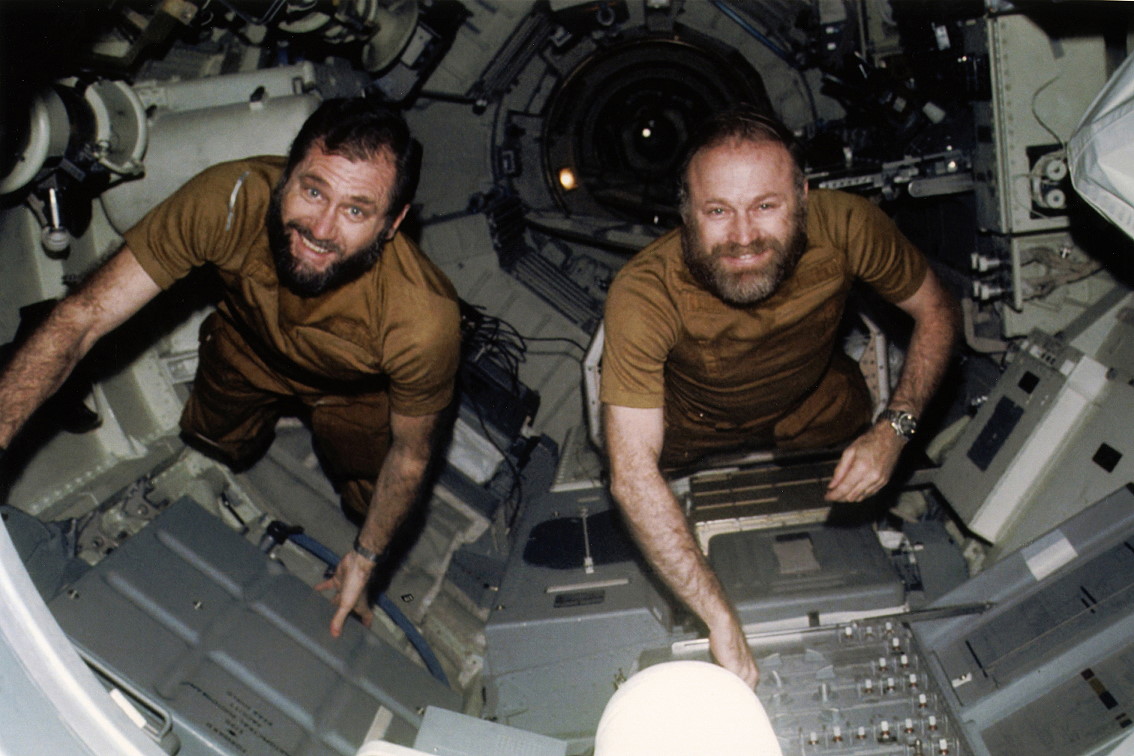
“On this ship’s deck,” Shepherd wrote, “sits no helm now / Rudder, sheet and rigs long since gone / but here still—a pull to go places / Beyond lines where sky meets the dawn.” Still, his prose was laced with traces of older times: Though star trackers mark Altair and Vega, same as mariners eyed long ago, we are still as wayfinders of knowledge, seeking new things that mankind should know.
Of course, the station runs on Greenwich Mean Time (GMT) and Shepherd and his men had their own “official” instant of midnight and the dawn of the New Year, but the peculiarity of their position aroused fascination back on Earth. In spite of their on-board clocks, they exchanged earlier greetings with mission controllers in Moscow (at GMT+3 hours) and later ones with Houston, Texas (at GMT-6 hours).
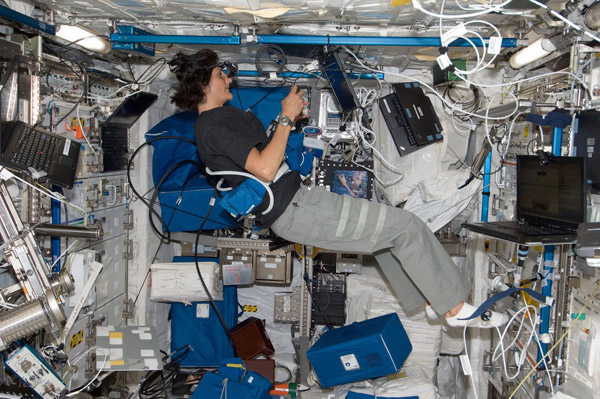
Shepherd’s Expedition 1 crew was by no means the first team of spacefarers to see in the New Year from beyond the veil of Earth. Back in 1973-74, astronauts Gerry Carr, Ed Gibson and Bill Pogue—were six weeks into their 84-day Skylab 4 mission when they endured (rather than enjoyed) the passage of one year into the next.
The first part of their flight left them excessively overworked and exhausted, and on 28 December 1973 Carr had a heart-to-heart with Mission Control. Two days later, it was agreed that routine chores would be placed on a so-called “shopping list,” to be completed when time permitted, and the crew were to be left unhassled during meal times and undisturbed after dinner in the evening.

At around the same time, on the 29th, Carr and Gibson performed a spacewalk to collect micrometeoroid samples and photograph Comet Kohoutek, which was visible in Earth’s skies that winter. “We observed a gorgeous thing,” recalled Carr in a NASA oral history, “small, faint, but gorgeous.”
Over the years, several Soviet and Russian crews spent New Year in orbit. Yuri Romanenko and Georgi Grechko celebrated the dawn of 1978 aboard the Salyut 6 space station, as did Vladimir Titov and Musa Manarov from Mir in 1988. From then on, every New Year until 1999 would see at least two humans in orbit on Mir, including a female cosmonaut—Yelena Kondakova—together with Germany’s Thomas Reiter and NASA astronauts John Blaha and Dave Wolf.
With no one in space at the dawn of 2000, there followed a resumption of activity from 2001 to the present day aboard the ISS. Of the 1990s, little detail emerged about how the transition from one year to the next was celebrated, although the dawn of 1998 was marked by a failure of Mir’s motion control system computer.
During the recovery process, the entire station—save for the base block and the Kvant-1 astrophysics module—was powered down as an electrical conservation measure. With the departure of Mir’s second-to-last crew in August 1999, the station was left unoccupied for the transition into 2000, and it was Bill Shepherd’s Expedition 1 team who celebrated the next New Year, high above Earth.
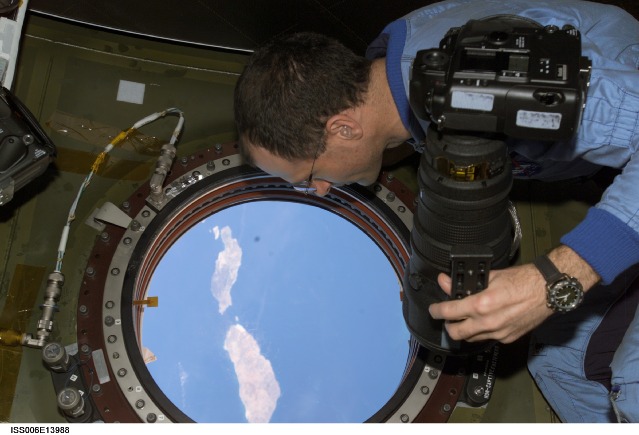
Since then, each 1 January has seen at least two spacefarers circling the Home Planet. Expedition 4 crewmen Yuri Onufrienko, Carl Walz and Dan Bursch enjoyed a serene New Year in 2002, relaxing and talking to family and friends.
A year later, Expedition 6’s Ken Bowersox, Nikolai Budarin and Don Pettit saw the dawn of 2003 during their official sleep shift. “The first day of the New Year,” noted a NASA press release, “involved only a few routine maintenance tasks, exercise and time off for the crew.”
Exactly a month later, on 1 February, shuttle Columbia and her entire crew were lost during re-entry and NASA was thrust into one of the worst crises in its existence. Although the ISS continued to be occupied, thanks to the assured crew return capability offered by Russia’s Soyuz craft, the outpost would host only a skeleton staff of two men for the New Years of 2004, 2005 and 2006, each remaining aboard for rotating six-month tours.
Crews returned to three members from New Year 2007, doubled to six in New Year 2011 and seven-person operations have been routine since 2021. “This is a good time,” said Pettit as he became the first American to celebrate a second New Year in orbit in 2012, “to reflect upon where we have all been and where we might want to go.”
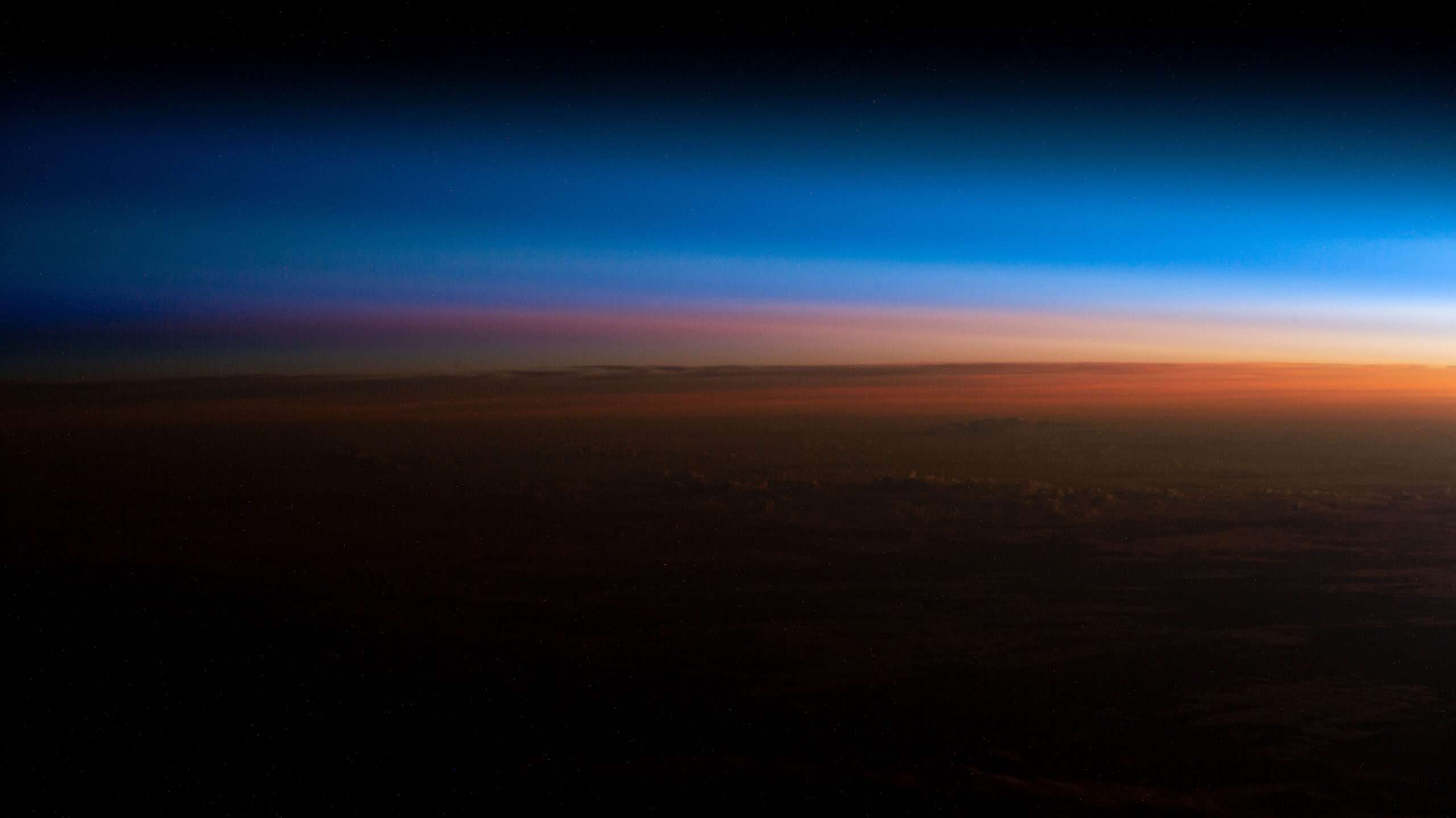
All told, including Expedition 70, no fewer than 116 individuals—including 17 women—from ten sovereign nations have spent New Year in orbit. Twenty-one people have spent two New Years off the planet, four have done so three times and Russia’s Anton Shkaplerov has seen the passage of one year to the next no fewer than four times from this unique Earth-circling perch.
Tonight, as Mogensen and his Expedition 70 crew gaze down at the planet of their birth, they will doubtless take time to reflect at the station’s windows. And as the world ushers in 2024, they will surely share earnest hopes for a better year to come.




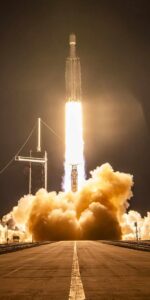
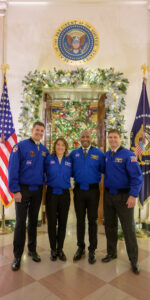
One Comment
Leave a ReplyOne Ping
Pingback:“Not of Earthly Pace”: Memories of New Years Spent in Space